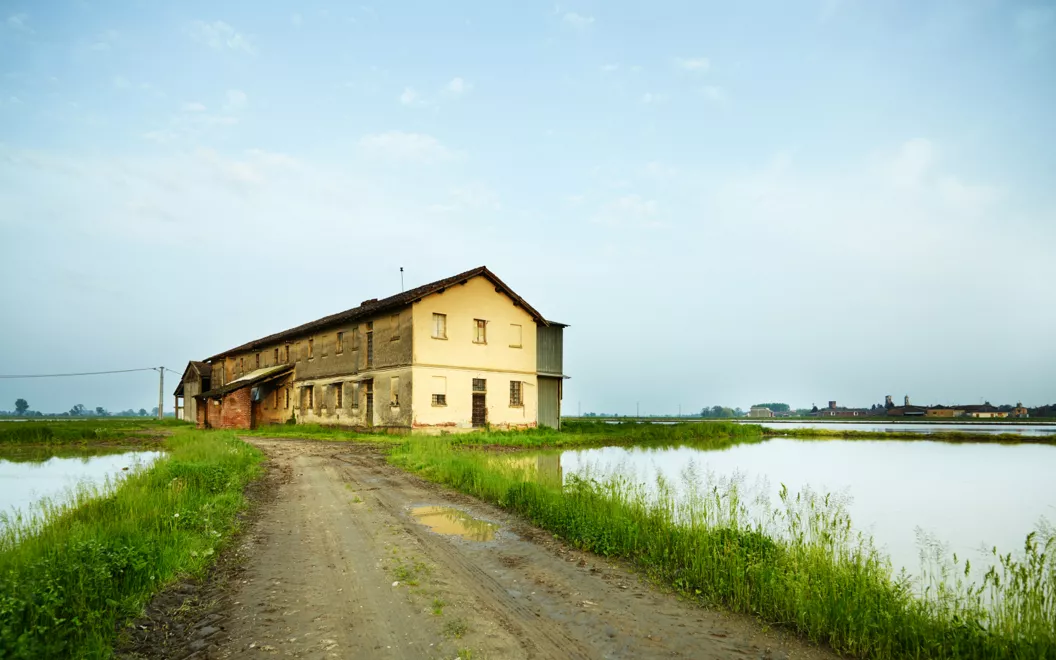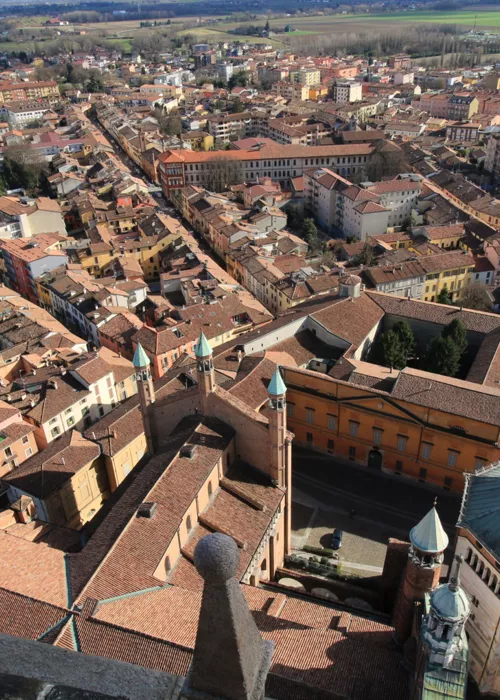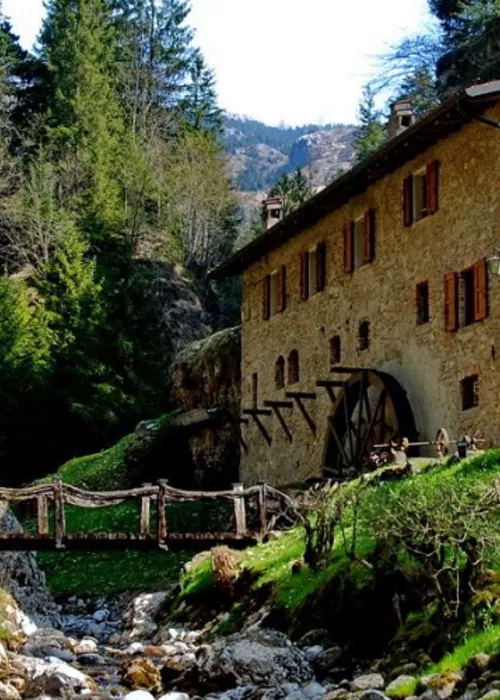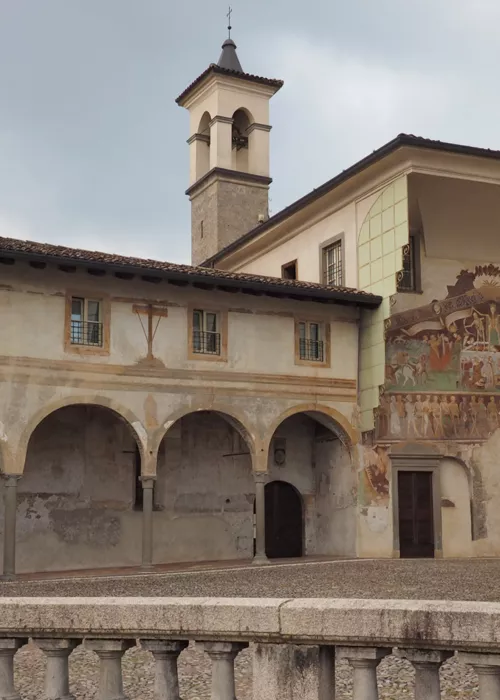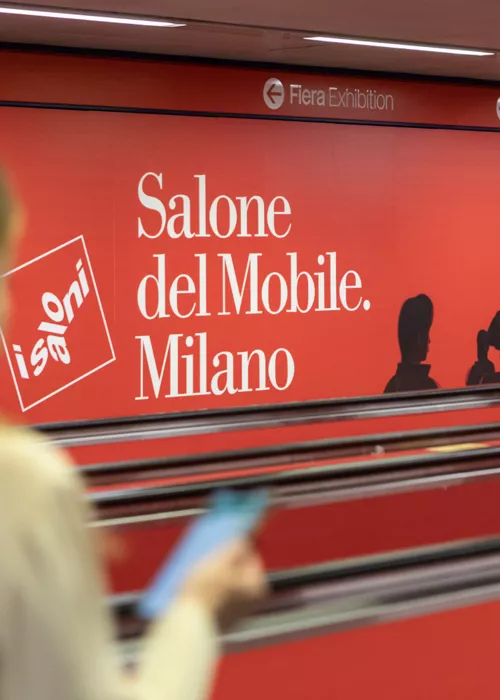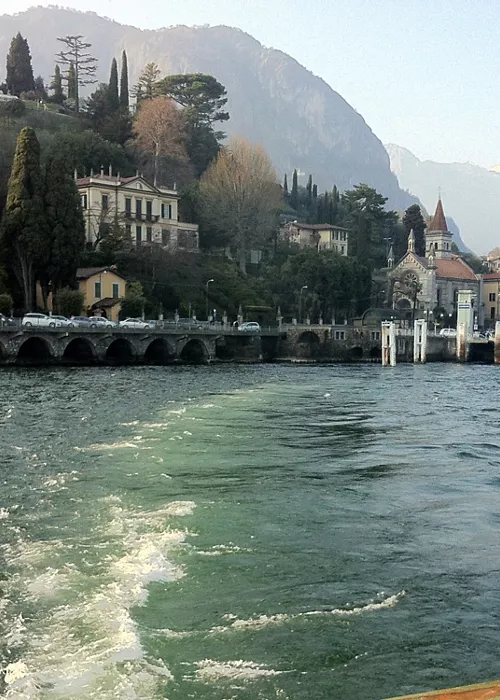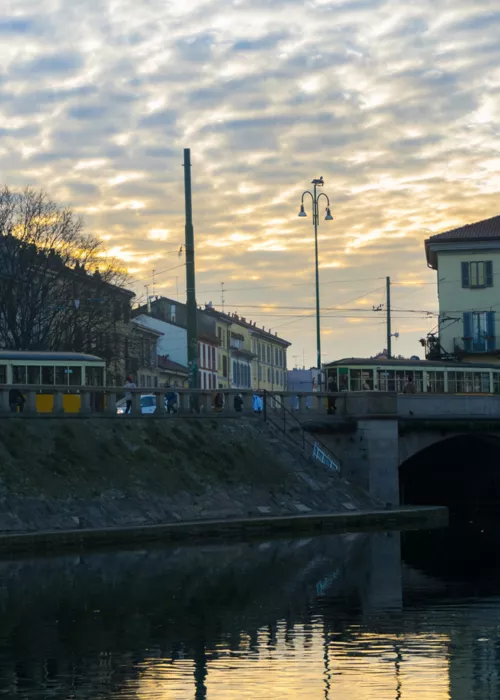Mortara

Mortara is located right along the route of the Via Francigena, trodden for centuries by pilgrims and wayfarers on their way to Rome, and preserves some religious buildings of important historical and artistic value.
Important works of art are hidden in the basilica of St. Lawrence in the heart of the city, and the monumental 19th-century cemetery is also a well-known cultural attraction.
We linger over the basilica, which is somewhat like a small museum of sacred art owing to the preserved paintings, most of which date back to the 16th and 17th centuries. Among the most famous artists who contributed to the decoration of the church, it is impossible not to mention Giulio Cesare Procaccini, Bernardino Lanino and Giovan Battista Crespi, better known as Il Cerano.
However, it is necessary to move slightly away from the historic centre to visit the best-known monument in Mortara. We are talking about the Abbey of Sant'Albino, a precious guardian of fifteenth-century frescoes, surrounded by a refined portico. The development of this abbey, located on the route of the Via Francigena, is closely linked to the events of the Battle of Mortara, which took place in 773 AD in these parts. On that historic occasion, the legendary King of the Franks, Charlemagne, crushed the resistance of the Lombard army, led by King Desiderio. The Abbey of Sant'Albino began to grow around the burial place of the (few) Frankish soldiers who had perished in battle: in the following centuries, numerous French pilgrims would visit the church to pay homage to their victorious ancestors.
Mortara also has a simple, rural soul. Those who happen to be in Mortara in the month of September should not miss the Goose Salami Festival, which celebrates the best-known local gastronomic speciality. For the occasion in the city, there is a succession of dances and historical processions in Renaissance settings. And that's not all: the seven city wards of Mortara clash during the festival in a large city "palio" competition, which is nothing more than a living "gioco dell'oca" (an Italian board game with a goose) based on the participants' skills in archery.
From Castello d'Agogna to Olevano di Lomellina

In the immediate vicinity of Mortara are two small villages that are well worth a closer look, Olevano di Lomellina and Castello d'Aragona. Along the way, there are endless sights to see. You are immersed in the ever-changing landscape of the rice field: flooded fields as far as the eye can see in late spring, emerald meadows in summer, ditch banks planted with poplars, large isolated farmsteads.
We start at Castello d'Agogna, named after its fortress, not far from the left bank of the Agogna River. In the village, it is said that the legendary Roman general Julius Caesar garrisoned this territory with his legions before marching on towards Gaul (modern-day France). Today, the town's main attraction is its castle, which has passed from hand to hand over the centuries to various aristocratic dynasties and is now owned by the descendants of the noble Isimbardi family. The fortress is available for private events and weddings. Olevano di Lomellina is another interesting agricultural village, also with its own defensive fortress. The surrounding landscape is largely occupied by fertile rice fields, flanked by cereal, asparagus and pea fields. People come to Olevano di Lomellina especially for the Museo di arte e tradizione contadina (Museum of Rural Art and Tradition): a large collection of tools and machinery bears witness to the development of agricultural techniques in Lomellina, especially the cultivation of rice and cereals. The museum has reduced opening hours, so it's best to call in advance. Speaking of castles and fortresses, before reaching the next stop, Garzaia di S. Alessandro, it is worth visiting Cozzo and its Castello Gallarati Scotti, which is an interesting place to learn about the history of this area.
Garzaia di Sant'Alessandro

On the route from Olevano di Lomellina down towards Breme and Sartirana Lomellina, the must-visit stop is the Garzaia di Sant'Alessandro, one of the best-known and most extensive in the province of Pavia.
What are the garzaie? These are small protected areas scattered throughout the Lomellina region where various native bird species live and flutter around. The name garzaia may derive from the dialect word "sgarza" meaning heron, one of the most common birds in Lomellina's natural habitat. Other common species are the little egret and the black-crowned night heron.
The visit routes require you to move slowly and quietly through the bushes, marsh reeds and pools of water. This might allow you to find specimens of birds that nest and breed in the protected environment of the garzaie. For those who wish to experience the fauna of the garzaie even more fully, some associations and nature groups organise guided excursions.
Sartirana Lomellina

A few minutes' drive from the border between Lombardy and Piedmont, shaped by the banks of the river Po, the village of Sartirana Lomellina links its history to the fortunes of its castle. Founded by the aristocratic Visconti dynasty in the 14th century, the fortress displays the bright red colour typical of Lombard bricks as you approach its mighty structure. A beautiful moat surrounds the fortress, topped by a high circular tower. Along the four sides of the castle, deep crevices and battlements can be seen on the walls for defensive purposes.
The inner courtyard is coloured by thick climbing ivy, and you walk through here to access the interesting museum exhibitions offered by the Fondazione Sartirana Arte. In Sartirana Lomellina too, it is best to check opening hours before going to the castle entrance.
Before continuing the route in the direction of ancient Lomello, a gourmet stop in Breme is a must, birthplace of a variety of red onions ("sigulle" in the local dialect) among the most popular in the Lombardy region and throughout Italy. The red onions from Breme are large, round and slightly flattened, and reveal a sweet yet savoury flavour. The ideal time to taste them is during the patron saint's festival in Breme, between May and June. The onion is an ideal accompaniment to a risotto with frogs and snails, a typical dish of the Lomellina region.
Lomello

The village of Lomello is located about 10 kilometres east of Sartirana Lomellina. As it is easy to guess, the village was already important in Roman times and its name indicated the entire territory of Lomellina.
The Roman settlement "Laumellum" had been mentioned as early as the 2nd century AD by the Greek geographer Claudius Ptolemy. It then became even more famous around the end of the 6th century AD when it hosted the wedding of members of the Lombard royal dynasty Theodolinda and Agilulfo. The commercial and political relations of the village of Lomello with the city of Pavia, the main centre of the Longobard kingdom, were in fact very good: the royal marriage definitively confirmed this.
A cultural visit to Lomello can start from the castle, which houses some 16th-century frescoes and what remains of two Roman floor mosaics.
A few steps from the fortress is the monumental S. Maria Maggiore complex, a religious building in the Lombard Romanesque style. The very first building collapsed in 1117 during an earthquake, although legend has it that it was the devil himself who destroyed the structure. A small section of this early version of the basilica can still be seen standing out against the sky, flanked by the rest of the structure, rebuilt after the earthquake.
Next to S. Maria Maggiore is the early Christian baptistery of S. Giovanni Ad Fontes, built between the 5th and 7th centuries AD and still standing after the earthquake. It is considered among the oldest cultural monuments in the whole of Lombardy and the original baptismal font is still preserved inside.
Going to Scaldasole passing through Valeggio

From Lomello, the agricultural landscape of Lomellina retains its uniformity by continuing eastwards. Around Valeggio and Scaldasole we pass through rice and cornfields, along vast areas bordered by high plains. The pools of water and small canals that run through these areas are the habitat for large nests of native birds.
In Valeggio you quickly realise that everything in this village revolves around its aristocratic fortress, a castle that resembles that of Sartirana Lomellina in style and size. Seven perimeter towers of heterogeneous shapes form a truly picturesque image of ancient charm.
Important historical figures have passed through the halls of the fortress of Valeggio, such as King FFrancis I of France and King Charles V of Habsburg. Among the various aristocratic dynasties that have inhabited the castle over the centuries, we must mention the Pico family, lords of the village of Mirandola, in the province of Modena. They say that the most famous member of this family, Giovanni Pico della Mirandola, began his extensive studies in Valeggio, which would make him one of the most scholarly and cultured intellectuals in Italian history.
Valeggio's fortunes have always been linked to Scaldasole, a small village just 5 kilometres away, with a beautiful red-brick castle housing a number of artefacts ranging from the Neolithic to the Lombard period.
A mighty castle also stands here: the Strada family has lived in this private fortress for a long time, but from time to time the amazing interiors of the mediaeval complex are opened for all to visit and appreciate.
As an alternative, it is also worth observing the large moat and the mighty walls of the fortress from the outside during a walk around its wide perimeter.


